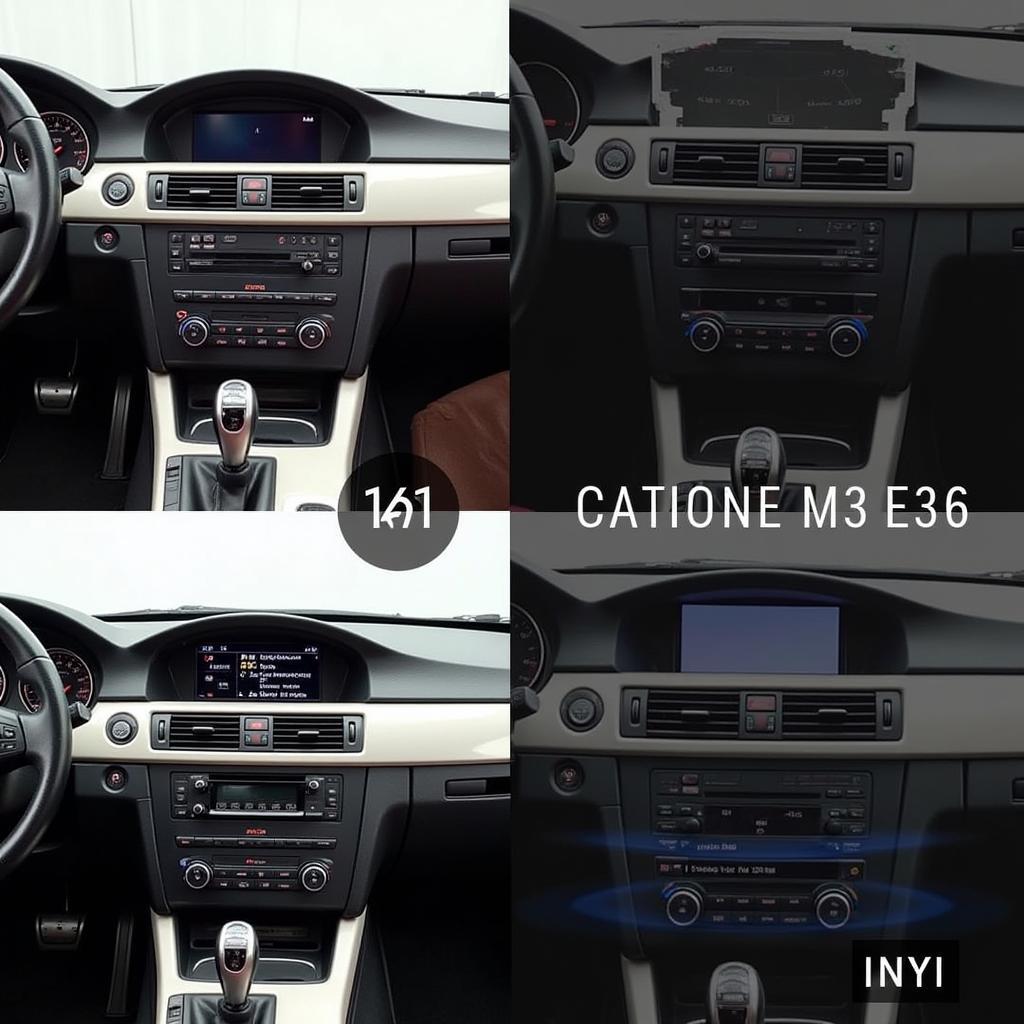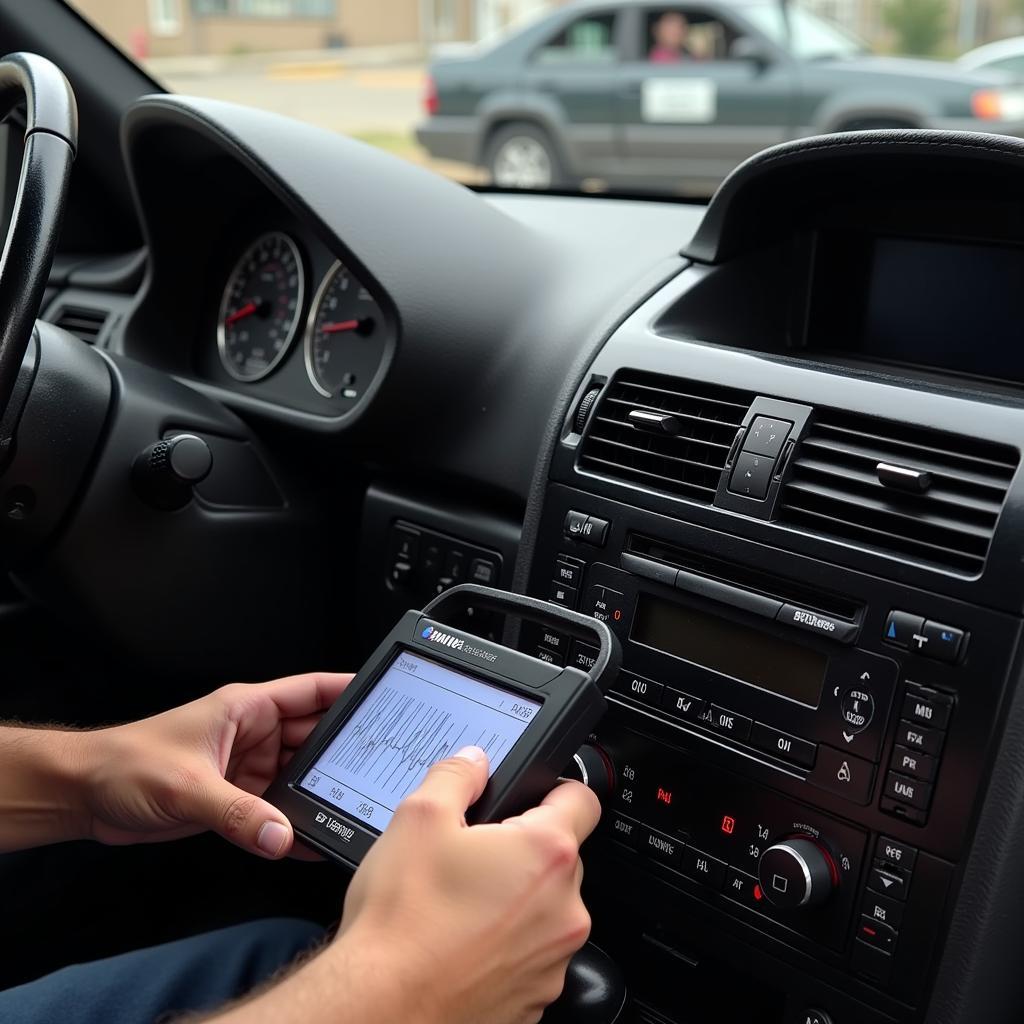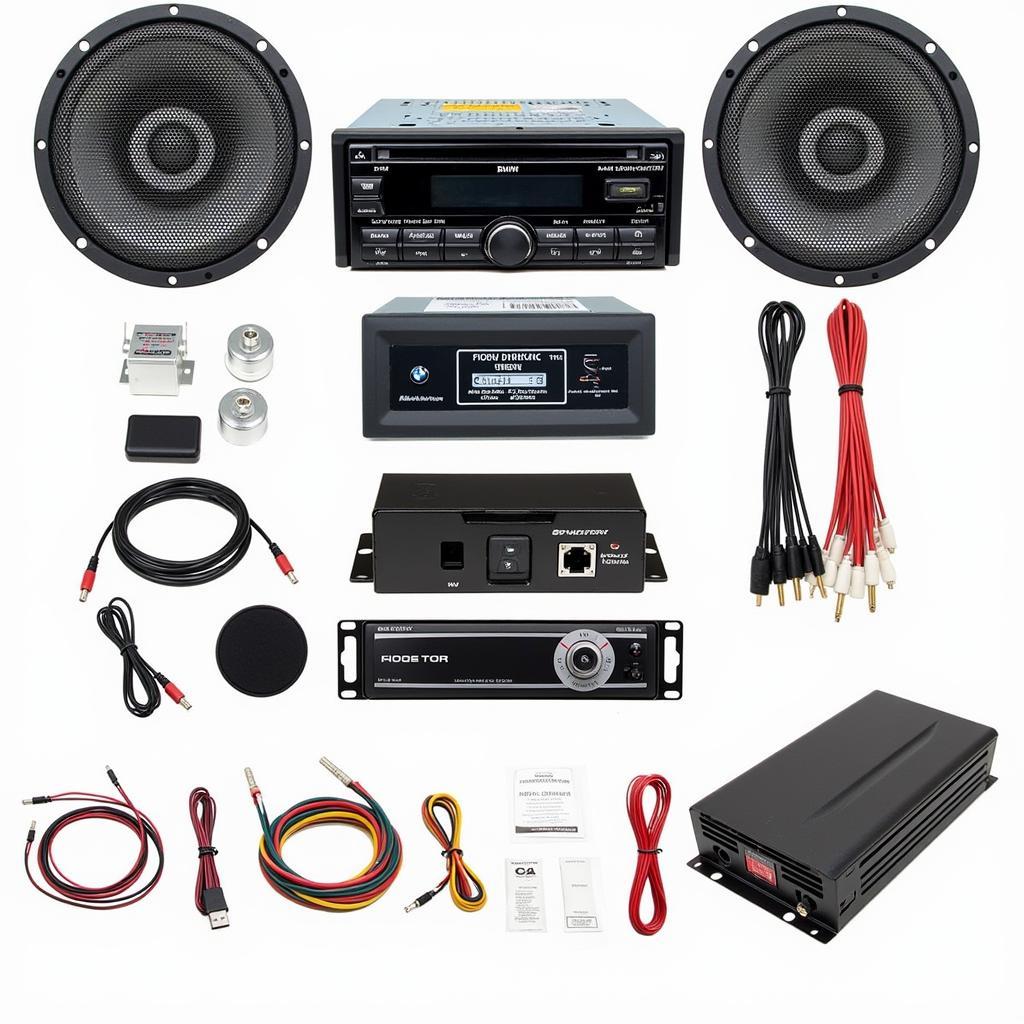The BMW M3 E36 is a legendary car, but its factory audio system often leaves much to be desired. Whether you’re looking for a subtle upgrade or a complete overhaul, this guide will cover everything you need to know about BMW M3 E36 car audio, from diagnosing common problems to installing a cutting-edge sound system.
Improving your E36’s audio can significantly enhance your driving experience. This guide will delve into the nuances of BMW M3 E36 car audio upgrades, providing valuable insights for car owners, mechanics, and technicians alike. We’ll explore common issues, diagnostic procedures, and solutions, ensuring your classic BMW sounds as good as it performs.
Common BMW M3 E36 Car Audio Problems
One of the most frequent complaints is speaker failure. Age, exposure to moisture, and excessive vibration can all contribute to blown speakers. Another common issue is amplifier malfunction, leading to distorted sound or complete audio loss. Wiring problems, often due to corrosion or damage, can also cause intermittent audio issues. Finally, the head unit itself can malfunction, causing issues with radio reception, CD playback, or auxiliary input.
What can cause these problems? Well, the age of the E36 plays a significant factor. Older wiring harnesses can degrade over time, leading to shorts or open circuits. The factory speakers, while adequate for their time, are often not up to the standards of modern audiophiles. And finally, previous owners may have attempted DIY installations, leading to further complications.
Diagnosing Your BMW M3 E36 Car Audio System
Before replacing any components, it’s essential to diagnose the problem accurately. Start by checking the fuses. A blown fuse can easily be overlooked. Next, inspect the wiring for any visible damage or corrosion. If the wiring appears intact, use a multimeter to test the continuity of the speaker wires and the power supply to the amplifier and head unit. If the head unit is suspected, try playing a CD or using an auxiliary input to isolate the problem.
A simple test for speaker functionality is to gently press on the cone. If you hear a scratching sound, the speaker is likely damaged. Remember, a systematic approach to diagnosis is key to identifying the root cause of your audio woes.
Choosing the Right BMW M3 E36 Car Audio Upgrades
Once you’ve diagnosed the problem, it’s time to choose the right upgrades. For speaker replacement, consider factors like size, power handling, and sensitivity. If you’re upgrading the amplifier, ensure it’s compatible with your head unit and speakers. And if you’re replacing the head unit, choose one that offers the features you need, such as Bluetooth connectivity, Apple CarPlay, or Android Auto.
Modern head units often provide improved sound quality and expanded features. Choosing the right amplifier depends heavily on the speakers you choose and the desired sound output. Don’t forget sound deadening materials! They can significantly improve sound clarity by reducing vibrations and unwanted noise.
 Upgrading the Head Unit in a BMW M3 E36
Upgrading the Head Unit in a BMW M3 E36
Installing Your New BMW M3 E36 Car Audio System
While some upgrades can be done DIY, professional installation is recommended for more complex systems. A professional installer can ensure proper wiring, optimal speaker placement, and system tuning for the best possible sound quality. This is particularly important for amplifiers and subwoofers, as improper installation can damage your car’s electrical system.
Correct wiring and speaker placement are critical for achieving optimal sound. A poorly installed system can lead to frustrating issues like buzzing, humming, or even damage to your car’s electrical system. If you’re unsure about any aspect of the installation, consult a professional.
Fine-Tuning Your BMW M3 E36 Sound System
After installation, fine-tuning is essential for maximizing sound quality. Adjust the equalizer settings on your head unit to achieve the desired balance between bass, midrange, and treble. Consider using sound deadening materials to further reduce unwanted noise and vibrations. For a truly customized sound experience, consult a professional audio technician for system tuning.
Think of your car’s interior like a miniature concert hall. Proper tuning ensures each frequency reaches your ears in perfect harmony. Experiment with the equalizer settings to find the sweet spot for your listening preferences.
 Tuning the Sound System in a BMW M3 E36
Tuning the Sound System in a BMW M3 E36
Conclusion
Upgrading your BMW M3 E36 car audio system can dramatically enhance your driving pleasure. By following this guide, you can diagnose common problems, choose the right upgrades, and ensure a successful installation. Remember, a well-designed sound system can transform your E36 into a rolling concert hall.
Similar to 1999 bmw e36 sound system, upgrading the audio system in your BMW M3 E36 can dramatically improve your driving experience. And if you’ve had success with Bluetooth audio, you can find more information about similar upgrades at bmw bluetooth audio success.
FAQ
- What are the most common BMW M3 E36 car audio problems? Speaker failure, amplifier malfunction, wiring issues, and head unit problems.
- How can I diagnose car audio problems? Check fuses, inspect wiring, and use a multimeter.
- What should I consider when choosing car audio upgrades? Speaker size, power handling, amplifier compatibility, and head unit features.
- Should I install my new car audio system myself? Professional installation is recommended for complex systems.
- How can I fine-tune my car audio system? Adjust equalizer settings and consider sound deadening materials.
- Where can I find more information about BMW E36 sound systems? Check out our article on 1999 bmw e36 sound system.
- Are there resources available on successful BMW Bluetooth audio installations? Yes, learn more at bmw bluetooth audio success.
For any assistance, contact us via Whatsapp: +1 (641) 206-8880, Email: CARDIAGTECH[email protected], or visit us at 276 Reock St, City of Orange, NJ 07050, United States. We offer 24/7 customer support.

